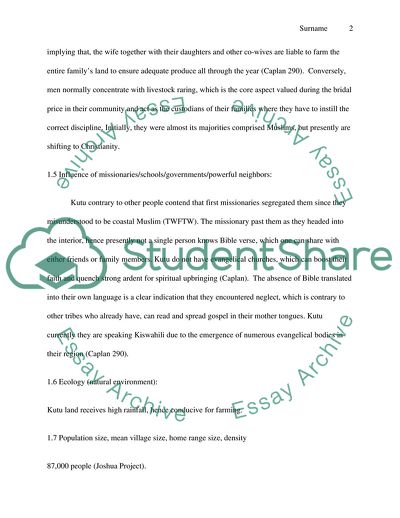Cite this document
(Ethnography of the Bantu Language: Kutu Term Paper Example | Topics and Well Written Essays - 1750 words, n.d.)
Ethnography of the Bantu Language: Kutu Term Paper Example | Topics and Well Written Essays - 1750 words. https://studentshare.org/anthropology/1774915-ethnograph-of-the-bantu-languge-kutu
Ethnography of the Bantu Language: Kutu Term Paper Example | Topics and Well Written Essays - 1750 words. https://studentshare.org/anthropology/1774915-ethnograph-of-the-bantu-languge-kutu
(Ethnography of the Bantu Language: Kutu Term Paper Example | Topics and Well Written Essays - 1750 Words)
Ethnography of the Bantu Language: Kutu Term Paper Example | Topics and Well Written Essays - 1750 Words. https://studentshare.org/anthropology/1774915-ethnograph-of-the-bantu-languge-kutu.
Ethnography of the Bantu Language: Kutu Term Paper Example | Topics and Well Written Essays - 1750 Words. https://studentshare.org/anthropology/1774915-ethnograph-of-the-bantu-languge-kutu.
“Ethnography of the Bantu Language: Kutu Term Paper Example | Topics and Well Written Essays - 1750 Words”. https://studentshare.org/anthropology/1774915-ethnograph-of-the-bantu-languge-kutu.


